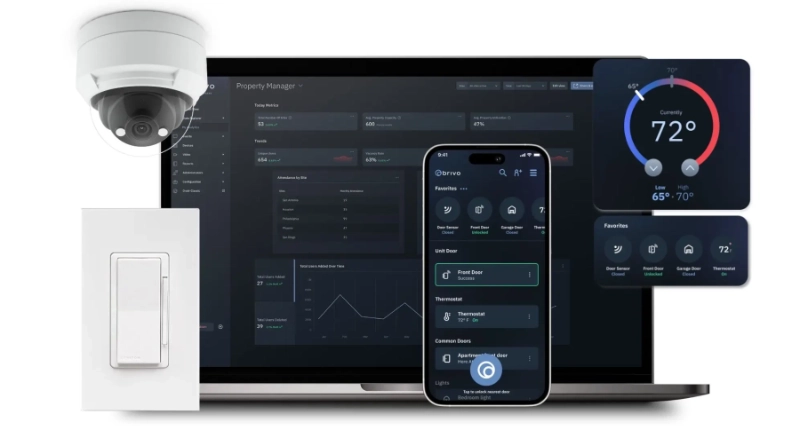On any given day, your facility has different issues that arise, are you equipped to efficiently resolve all issues at multiple locations?
How to make multiple facilities safer:
1. Cloud Access Control
When someone uses the term cloud when referencing technology, in layman’s terms, it means new, forward thinking, accessible for anywhere and easy to use.
When we say multiple facilities can become safer with cloud access control, we refer to access control that provides simplicity, scalability and adaptability to security management.
Simple Security
While on-premise solutions require daily management from each location and leave room for human error, cloud access-control allows you to access and manage your system from all your devices (desktop, tablet or smartphone) using an iOS or Android app.
Scalability
A big misconception is that if you only have a few locations, why should you care about scaling your access control needs? The truth is, as your company grows, and the needs of the business evolve, modern systems are more flexible and can quickly adapt alongside your company. For example, if you need to add new locations you are not limited to a number of users, doors or locations.
Adaptability
A common limitation in non cloud technologies is that they work independent of other systems, which requires a lot of time and effort in connecting them together. On the other hand cloud-based solutions provide the flexibility to easily integrate with other technologies and products so that you can have a solution that fits just your specific needs. The beauty of this comes from what is referred to as an API. An API allows you to connect disparate capabilities into holistic solutions that you can access from a single interface.
To arm yourself with the information you need to get executive buy-in watch the webinar, How To Convince Your Leadership Team To Upgrade to Cloud-based Access Control.
For those of you that are looking to better understand the concept of adaptability, let’s consider the below:
2. Integrate Your Access Control System with Video Surveillance and Mobile Capabilities
If you have an on-premise access control system, you will likely have many disparate operational systems because they are unable to be integrated into a single interface. Therefore, if you want to be able to connect your video surveillance footage with your access control events, you would need to login into two systems to access this information. What a pain that is. However, with cloud-based technology, all add-on features can easily be connected to the access control system through the API. This type of integration allows all your video footage to be tied to each access control event in one system—saving your company time and increasing your overall security by not missing incidents or breaches due to human error.
The same type of convenience applies when you want to provide your employees with mobile access control credentials (aka the ability to open doors with your smartphone), instead of or in addition to issuing physical access cards. You can remotely issue or revoke access rights for the mobile credential from anywhere, with any device. All information regarding the mobile credential is stored in the same interface, as your video and access control solutions, because with cloud-based access control it is fully integrated into a unified system.
3. Integrate Your Management Tools
It may come at no surprise that you’re able to integrate security features, like video surveillance and mobile credential access, but did you know that the open API associated with cloud-based systems allows you to integrate other management tools? For example, do you have an HR or membership management tool you use? If you do, then it’s imperative to connect these systems to your access control system so that when you members stop paying you, or when an employee leaves, you can revoke their rights from a single system.
With cloud-based systems you are able to see both who is accessing your location (access to front door of office, lobby, backdoor etc.) as well as who has the appropriate rights to each of your amenities, like your gym, or pool. So instead of having to access two separate systems for this information, as the information actually lives in both systems, you are able to have one consolidated view in a single system of the people, facilities and access rights.
For more details on integrating your access control system with management tools, check out our new e-brief: Become a facility hero: discover 3 useful tools for extraordinary physical security management.













